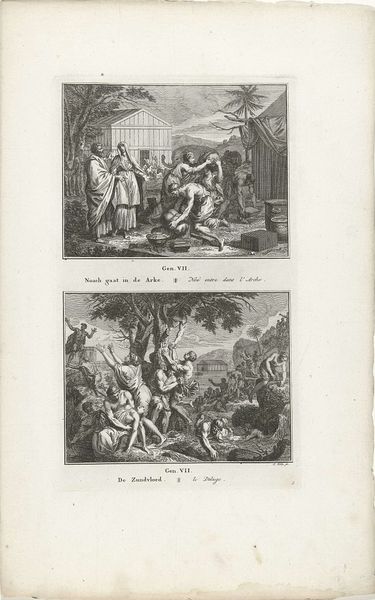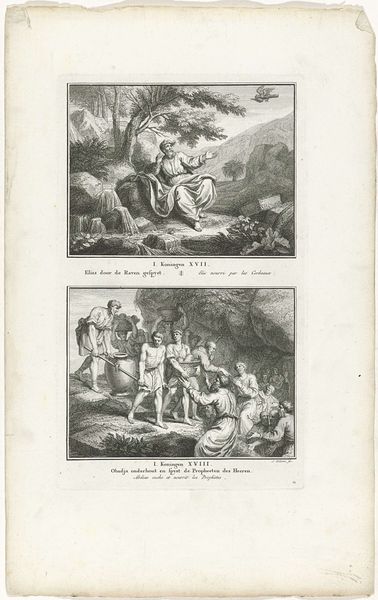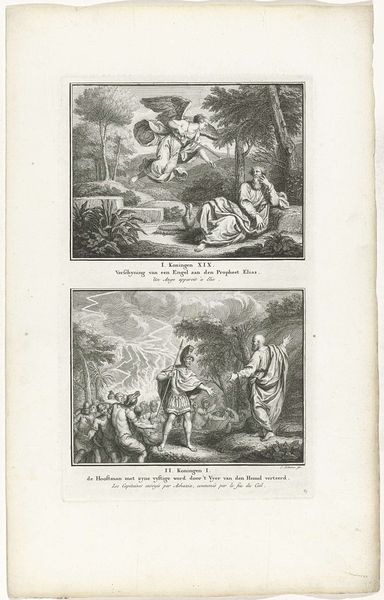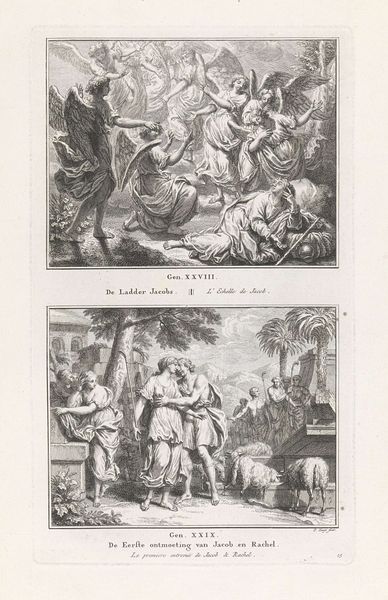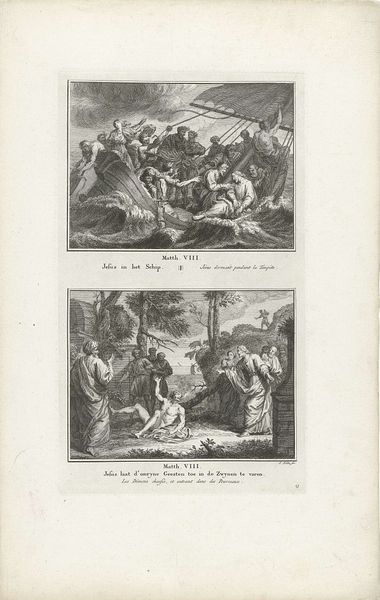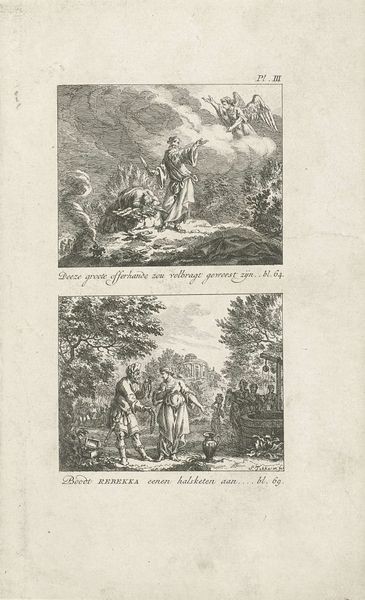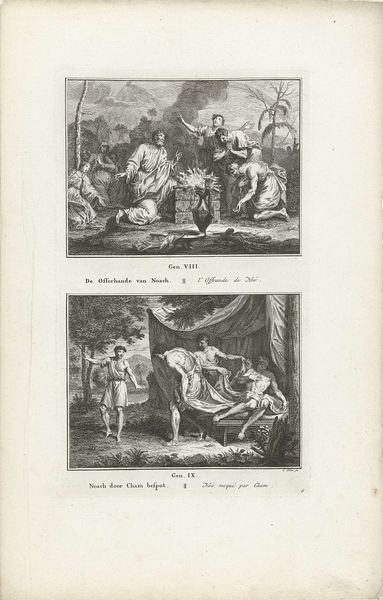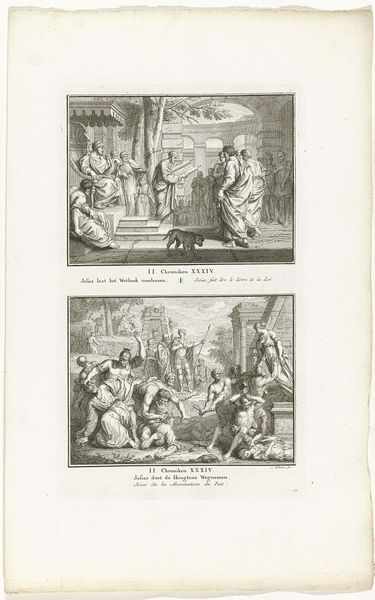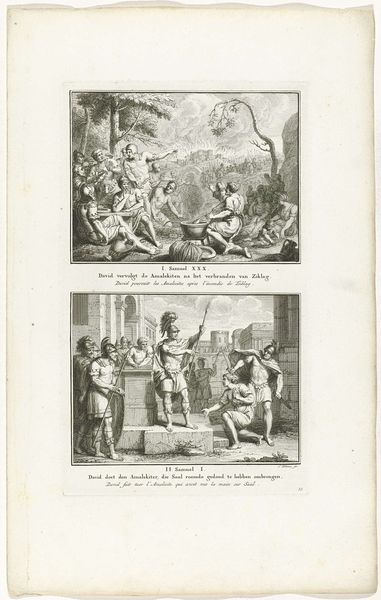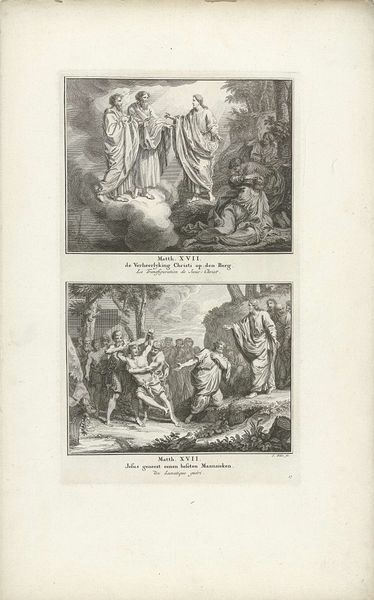
Hemelvaart van Elia en de bestraffing van de kinderen die Elisa bespotten 1791
0:00
0:00
Dimensions: height 333 mm, width 198 mm
Copyright: Rijks Museum: Open Domain
Curator: What a fascinating engraving. This is "The Ascension of Elijah and the Punishment of the Children Mocking Elisha," crafted in 1791 by Jacob Folkema, now held here at the Rijksmuseum. The meticulous detail, rendered in ink on paper, depicts two biblical scenes, one above the other. Editor: My initial reaction? Yikes. Talk about divine wrath. The upper scene with Elijah blazing to heaven on a chariot, sure, that's classic. But then you drop down and see those poor kids being mauled by bears! It’s a brutal contrast. Curator: Indeed. The work illustrates two separate passages from the Second Book of Kings. Above, we see the prophet Elijah's dramatic ascension to heaven in a whirlwind, a fiery chariot drawn by horses. It's a theophany of immense power. Editor: Totally theatrical, right? All that baroque drama in the swirling clouds, Elijah getting snatched away… it feels operatic. Then, wham, back to earth with a decidedly less celestial scene. Curator: The lower panel, often overlooked, is, in some ways, more socially revealing. It represents the consequences of disrespect toward the prophet Elisha, who cursed the children for mocking his baldness. Editor: Bald jokes gone wrong! Honestly, who expects bears? It really makes you wonder about the prevailing social attitudes and anxieties when this piece was made. Was it meant as a morality tale, a caution against disrespect for authority, or something more... sinister? Curator: Exactly. We see how societal hierarchies and religious expectations are brutally enforced through artistic narratives. The work reflects a world where divine punishment was a very real fear, where children’s behaviour mirrored social expectations of respect for God’s servants. The artist probably intended to reflect this societal order through their image. Editor: So it is basically a vintage PSA about respecting your elders? It’s unsettling, really. And the composition emphasizes it further—light and heavenly chaos up top versus dark, earthly retribution below. Gives you a lot to chew on. Curator: It does indeed, demonstrating how art could instruct but also instill fear to keep viewers within the social constraints of the time. Editor: It's certainly not the kind of engraving I'd hang in a nursery. Definitely leaves you pondering the power dynamics at play then, and honestly, even now. Curator: A truly striking example of how art reveals the complex relationship between faith, social control, and storytelling in the late 18th century.
Comments
No comments
Be the first to comment and join the conversation on the ultimate creative platform.
